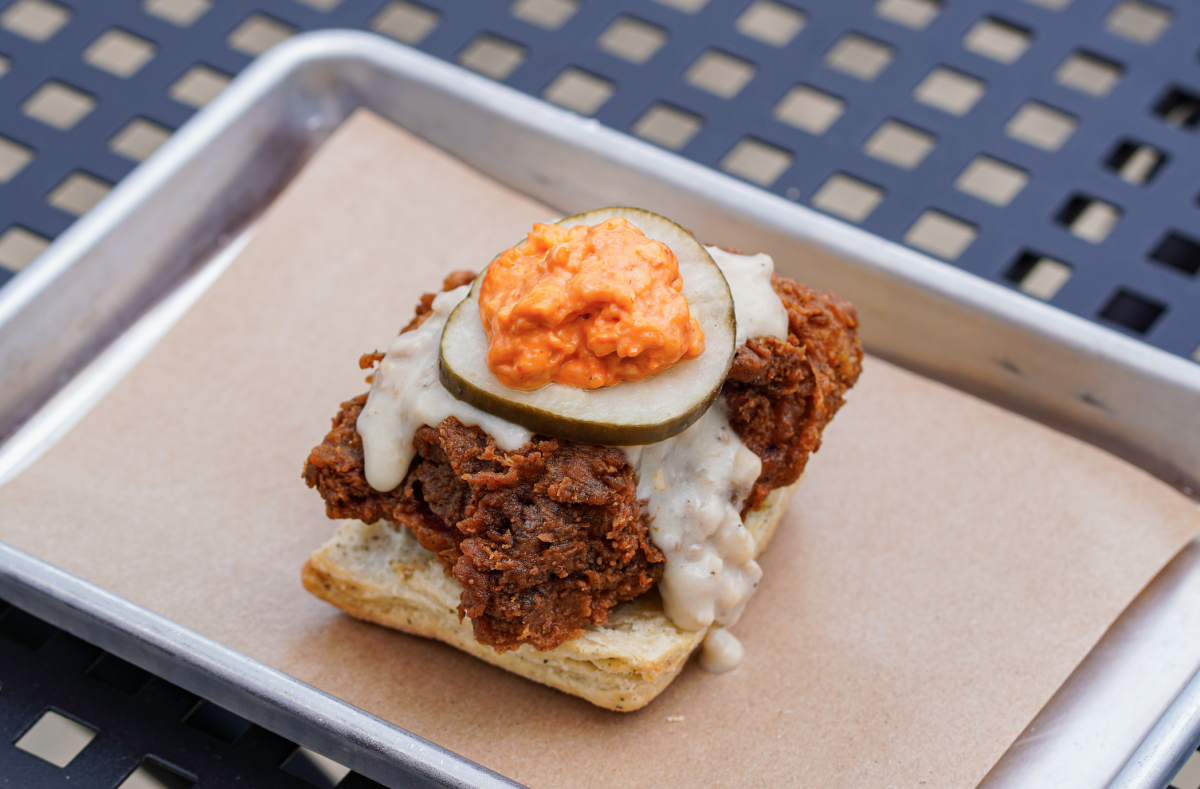By BJ Poss
Barbecue is nestled as deep in Charlottesville’s roots as any homemade brine. You’d be hard-pressed to find a self-respecting plate of pork barbecue in Virginia that didn’t start out submerged in coarse salt dissolved in water full of sugar, spices, and citrus zest, a chef’s emulsion that absorbs into the meat and, when touched with smoke and fire, blooms into a succulent delight.
One player, noticeably absent on the smokin’ scene, returned last month after an unfortunate hiatus: Ace Biscuit & Barbecue is back to serving the heart of Virginia barbecue classics with a kiss of the South.
Ace shut its doors in late March 2024 after being vandalized beyond the point of recognition. The vandal (who was fittingly charged and sentenced on the day of the restaurant’s re-opening), did $50,000 of damages to wiring, fryers, and flooring—and even the toilets took a beating. To top it off, an eye got smashed out of a portrait of Hunter S. Thompson that, if we’re being honest, would likely earn a smirk from HST himself.
With the kitchen intact again and the dining room close behind, Ace is prepping out a full menu, showing that Southern gastronomy far exceeds crispy lard and baked buttermilk. “Southern food should pull out a memory,” says Ace manager Scott Hewitt. “It isn’t simple; it’s science.”
Ace’s kitchen culture relies on the creativity of the staff to treat the menu as a conversation rather than a rulebook. “We’re all chefs, and we’re all artists,” Hewitt declares. Art plays a role in layering flavor and texture in each dish. Look to Ace classics like the Ol’ Dirty Biscuit—southern fried chicken dripping in sauce gravy, cut with acidic, crisp pickles and smoke of house-made pimento cheese—and the Ace Dip, with jerk chicken sitting atop soft pepper jack to be dunked in Ace jus.

With an influx of creativity lining its kitchen, Ace is ready to push the envelope on what it means to whip up some low and slow fixings. Charlottesville chef Chris Humphries of Bonny and Read brings an elevated eye to the table as he’s begun to oversee the kitchen in hand with staff who have been spritzing the smokers since Ace’s early years.
Since the break-in, Ace has become resourceful in reconnecting with its customers by forking out brisket at pop-ups, rolling breakfast burritos at the Charlottesville City Market, and offering dinner pairings like Gochujang sticky ribs with a German riesling at The Wine Guild.
“We just wanted to get the smokers rolling again,” explains Operations Manager Will Curley, who is downright giddy over how Charlottesville has welcomed back a parking lot of bellowing hickory smoke. “Hearing customer’s bits and pieces reminds you of the sort of community keystone Ace is … makes you really happy to be involved in a project like this.”
Ace used the closure as an opportunity to rethink its space. They’ve done everything from moving the waffle maker to plopping an elevated stage in the dining room, giving Charlottesville a new venue to let loose. “We can’t wait for the first Friday night concert in the dining room, where the band is rocking, the bar is cranking, and the barbecue is smokin’,” says Curley.
Hardcore metal pairs with barbecue as well as any acid-driven riesling. Like a crispy, smoky, protective bark that softens to a tender, melodic center-cut spare rib, hardcore shows have found their Charlottesville home among red brick and carbon steel. “Every time we have a hardcore or metal show, it’s like a dam break,” Curley says with a grin.
“We’re listening to what Charlottesville wants from us. We’re excited to see where Charlottesville takes Ace in the future.”
Ace Biscuit & Barbecue is serving its full menu from its barbecue window with outdoor seating. Stay tuned for the dining room’s official re-opening.








